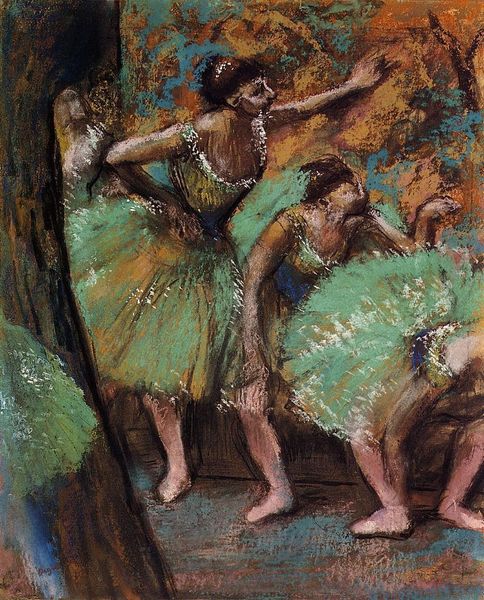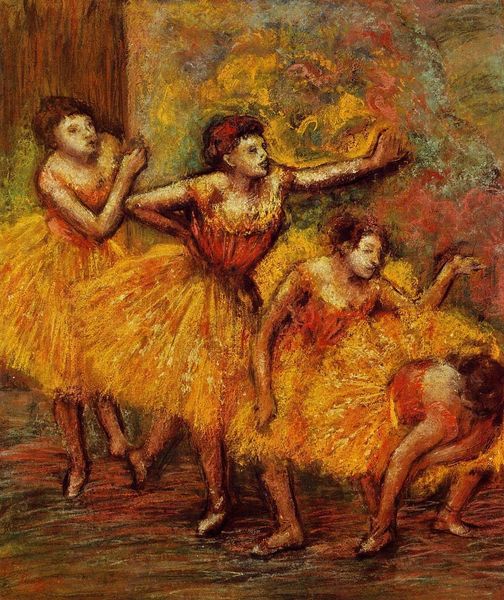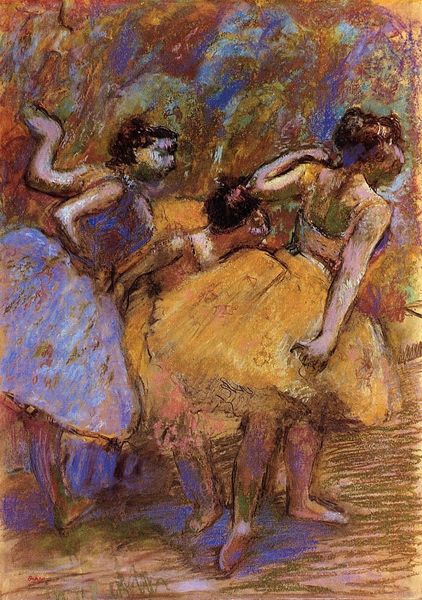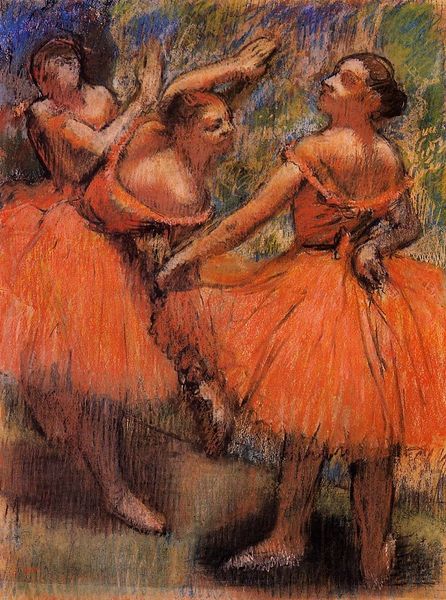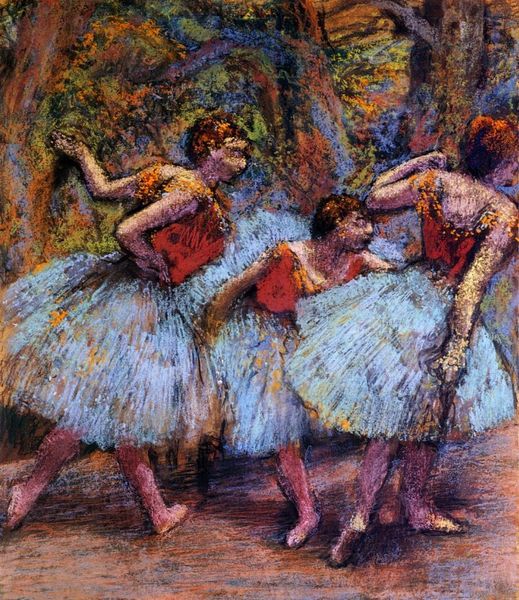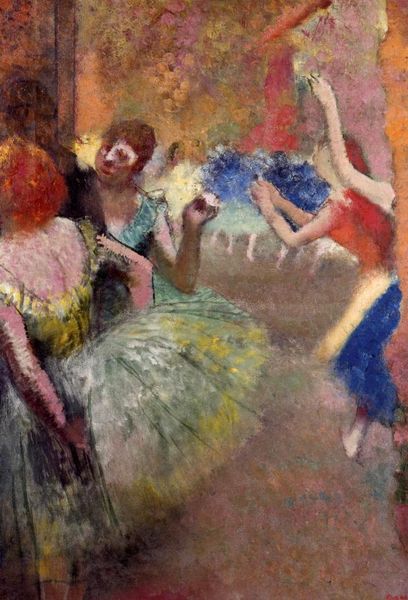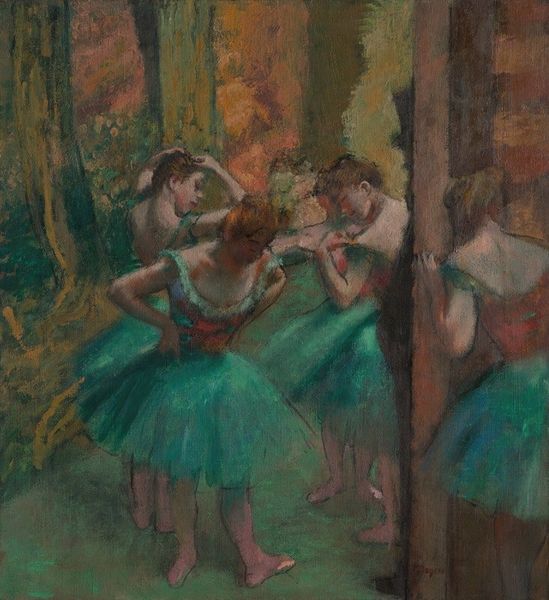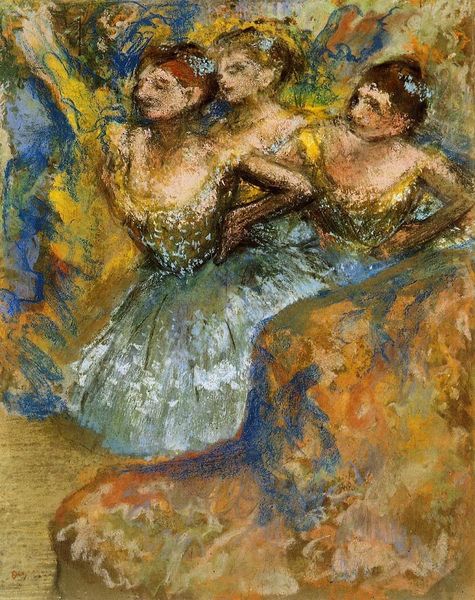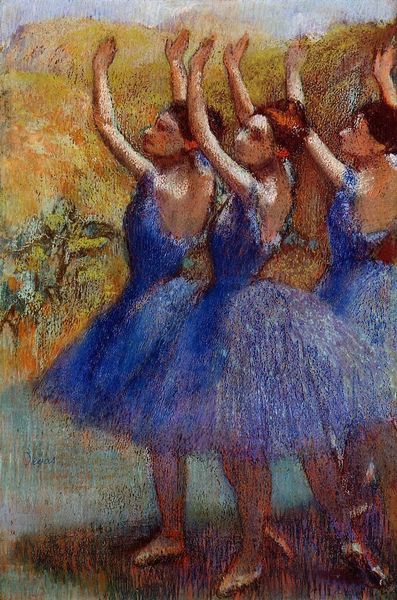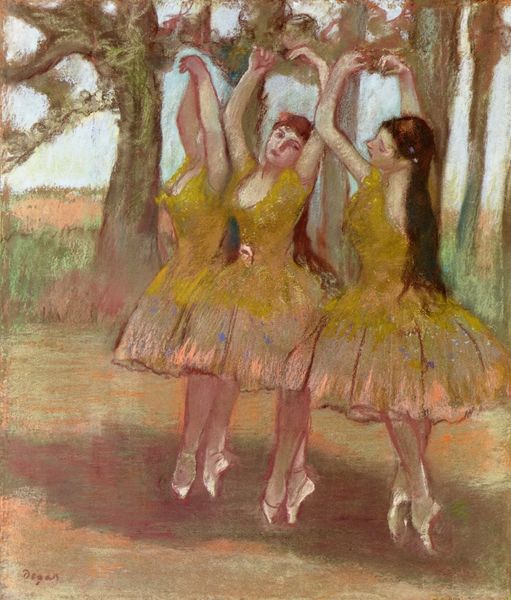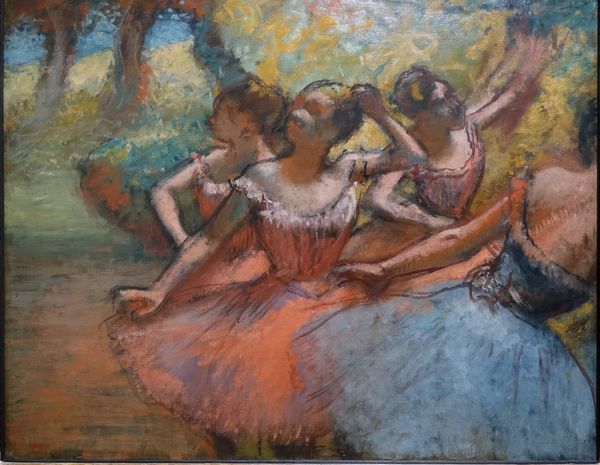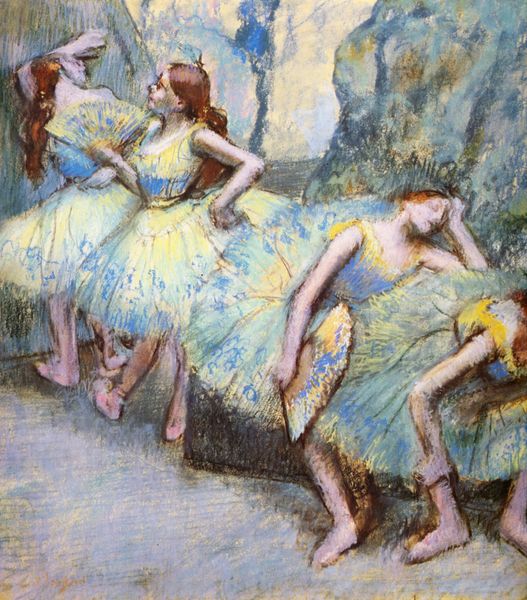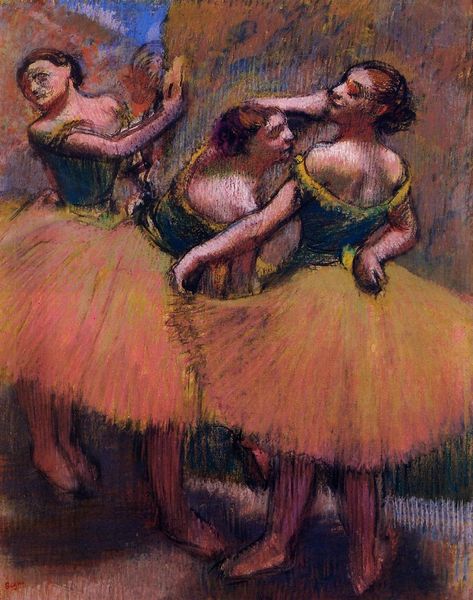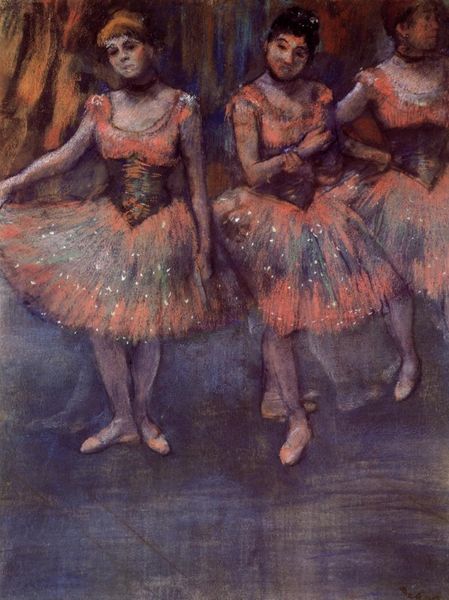
Copyright: Public domain
Let’s dance! This is one of Edgar Degas’ most iconic works, dating from the early years of the twentieth century. Degas lived in Paris between 1834 and 1917, and is perhaps best known for his depictions of dancers and performers. This is ‘Danseuses vertes et jeunes’, which translates to ‘Dancers in Green and Yellow’ (1903). It’s an electrifying drawing created from pastel and charcoal rather than the oil paints and watercolours that Degas often worked with at the beginning of his career. What sparked this change in medium? From the 1880s, the artist began to experience sight difficulties. This made naturalistic details more challenging. Pastels provided a blurred softness which allowed Degas to focus on loose shapes and colour. Here, the blurred quality of the pastels provides a sense of action and spontaneity that perfectly suits the subject. The pastels are smudged, with hazy outlines. The ballerinas themselves seem caught in movement. The ballerina in the centre of the composition stands poised on one foot, with one arm raised and the other balancing at her waist. Degas has included small, visible brushstrokes of pure yellow to emphasise the pale green shades of her tutu. Degas’ choice to represent ballerinas in dance practice displays his focus on the spectacles of a rapidly developing Paris. He wasn’t afraid to shine a light on the serious issues which lingered between the surface of the city at the turn of the century. Ballerinas often had a difficult life – their careers could be insecure, meaning they were financially dependent on upper-class male admirers.
Comments
No comments
Be the first to comment and join the conversation on the ultimate creative platform.
